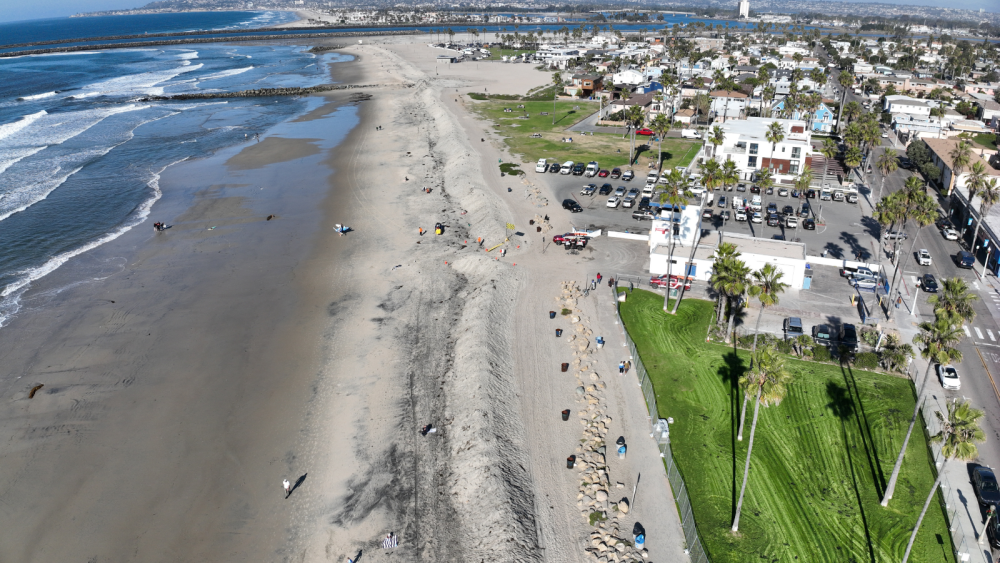Landmark Coastal Resilience Master Plan to Protect Beaches and Coastline Now Adopted

Following today’s approval of the Coastal Resilience Master Plan, the City of San Diego is moving forward with concept projects at four locations to address the growing risk of coastal flooding and erosion. The San Diego City Council voted to adopt the plan, which was developed to help the City brace for the impacts of a warming climate. The plan includes concept-level designs of nature-based solutions, such as elevated sand dunes, restored coastal habitats and realigned parks and infrastructure.
Sea levels in San Diego are expected to rise five to 14 times faster this century than the last, significantly increasing the risk of flooding and erosion. The State Lands Sea Level Rise Vulnerability Assessment conducted by the City in 2019 found that, by 2050, sea level rise, accompanied by storm surge, could place $208 to $370 million worth of public assets at risk along San Diego’s shoreline. These assets include bridges, roads, parks, recreation centers, water pipes and more. Open space and conservation areas are also highly vulnerable to both sea level rise and coastal storm events.
“San Diego’s beaches and coastline are part of what makes our city so unique, and the Coastal Resilience Master Plan will play a key role in protecting them for the future,” said Chief Resilience Officer Julia Chase. “In addition to preparing for sea level rise, this plan also aims to improve public access to the coast, support recreation opportunities and protect natural habitats.”
The plan prioritizes six pilot sites based on feasibility, resilience needs and environmental benefits: La Jolla Shores, Pacific Beach – Tourmaline Surf Park, Mission Beach, Ocean Beach – Dog Beach, Ocean Beach – Beachfront (Pier), and Sunset Cliffs. Four sites, including two at Ocean Beach, will advance into the City’s Capital Improvement Program for initial engineering over the next year:
Tourmaline Surf Park: Convert the existing shoreline protection feature into a hybrid nature-based solution. The existing rip rap would be buried to provide a core layer and topped with sand and vegetated with native plantings to provide ecological benefits.
Ocean Beach – Dog Beach and Beachfront (Pier): Restore dune habitat near Smiley Lagoon and build a new multi-use path for pedestrians and cyclists fronted by elevated, vegetated dunes. The multi-use path would provide mobility connection from the San Diego River bikeway to the Ocean Beach Pier.
Sunset Cliffs: The major focus for the Sunset Cliffs concept is to enhance the existing resources and protect public safety without compromising the structural integrity of the cliff or current infrastructure. The project concept includes trail enhancements, revegetation of the linear park with native vegetation, drainage improvements and removal of the paved parking lots from the cliff. It also considers road reconfiguration for a section of Sunset Cliffs Boulevard, which would create a new separated pedestrian path and a one-lane, one-way southbound vehicular travel lane.
Nature-based solutions provide additional environmental and socio-economic benefits such as enhanced and protected habitat, green jobs and environmental education opportunities. The projects consider ways to enhance access to the coast for all community members, such as expanded public transportation to the beach, improved pedestrian and bicycle infrastructure and efficiency enhancements for parking.
Next steps include technical and feasibility studies, additional environmental analysis, and continued community engagement, including focused workshops in each community where projects are proposed.
To review the plan and sign up for updates on engagement opportunities, visit the Coastal Resilience Master Plan webpage.
